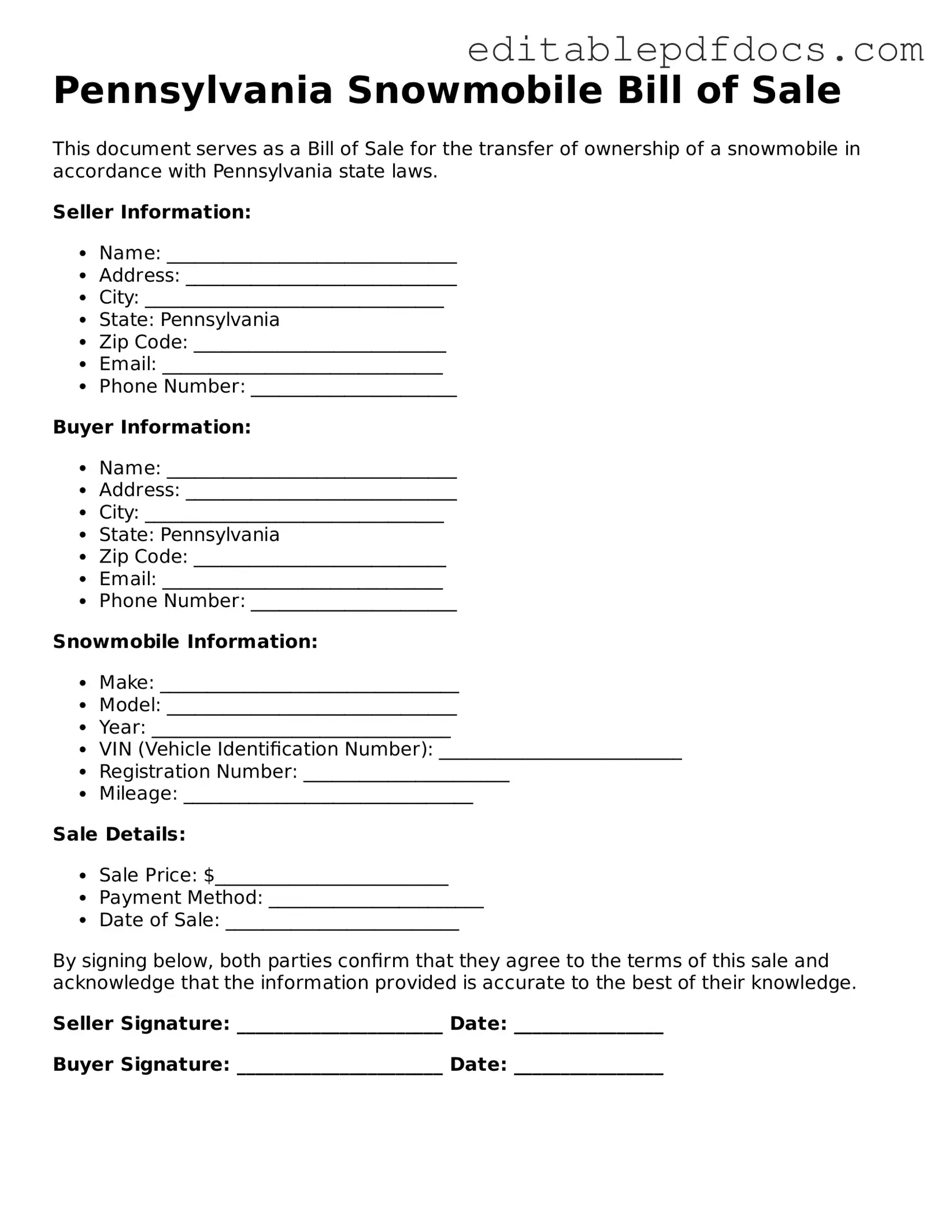Filling out the Pennsylvania Snowmobile Bill of Sale form can seem straightforward, yet many individuals encounter pitfalls that can complicate the transaction. One common mistake is failing to provide accurate personal information. Buyers and sellers must ensure that their names, addresses, and contact details are correct. A simple typo can lead to confusion or even disputes later on.
Another frequent error is neglecting to include the vehicle identification number (VIN). This unique identifier is crucial for registering the snowmobile and proving ownership. Omitting the VIN can result in delays or complications when the new owner attempts to register the snowmobile with the state.
Some individuals mistakenly assume that the date of sale is not important. However, this date is essential for establishing the timeline of ownership transfer. Without it, the documentation may lack clarity, potentially leading to issues regarding liability or warranty claims in the future.
Moreover, many people overlook the need for signatures from both the buyer and the seller. Without these signatures, the bill of sale may not be legally binding. Both parties should take the time to review the document and ensure that it is properly executed to avoid any legal complications.
Another common mistake involves the failure to indicate the sale price. This information is not only important for record-keeping but also necessary for tax purposes. If the sale price is left blank or inaccurately stated, it could lead to issues with tax authorities down the line.
Additionally, some individuals may not provide a thorough description of the snowmobile. While the VIN is important, including details such as the make, model, year, and color can help clarify the transaction. This additional information can prevent misunderstandings about the specific vehicle being sold.
People often forget to keep a copy of the completed bill of sale for their records. Retaining a copy is essential for both the buyer and seller, as it serves as proof of the transaction and can be referenced in case of future disputes. Without a copy, one party may find themselves at a disadvantage if questions arise later.
Lastly, many individuals do not take the time to read the entire form before submitting it. Each section of the bill of sale is designed to capture important information, and skipping over any part can lead to incomplete or inaccurate documentation. Taking a few extra moments to review the form can save time and hassle in the long run.
